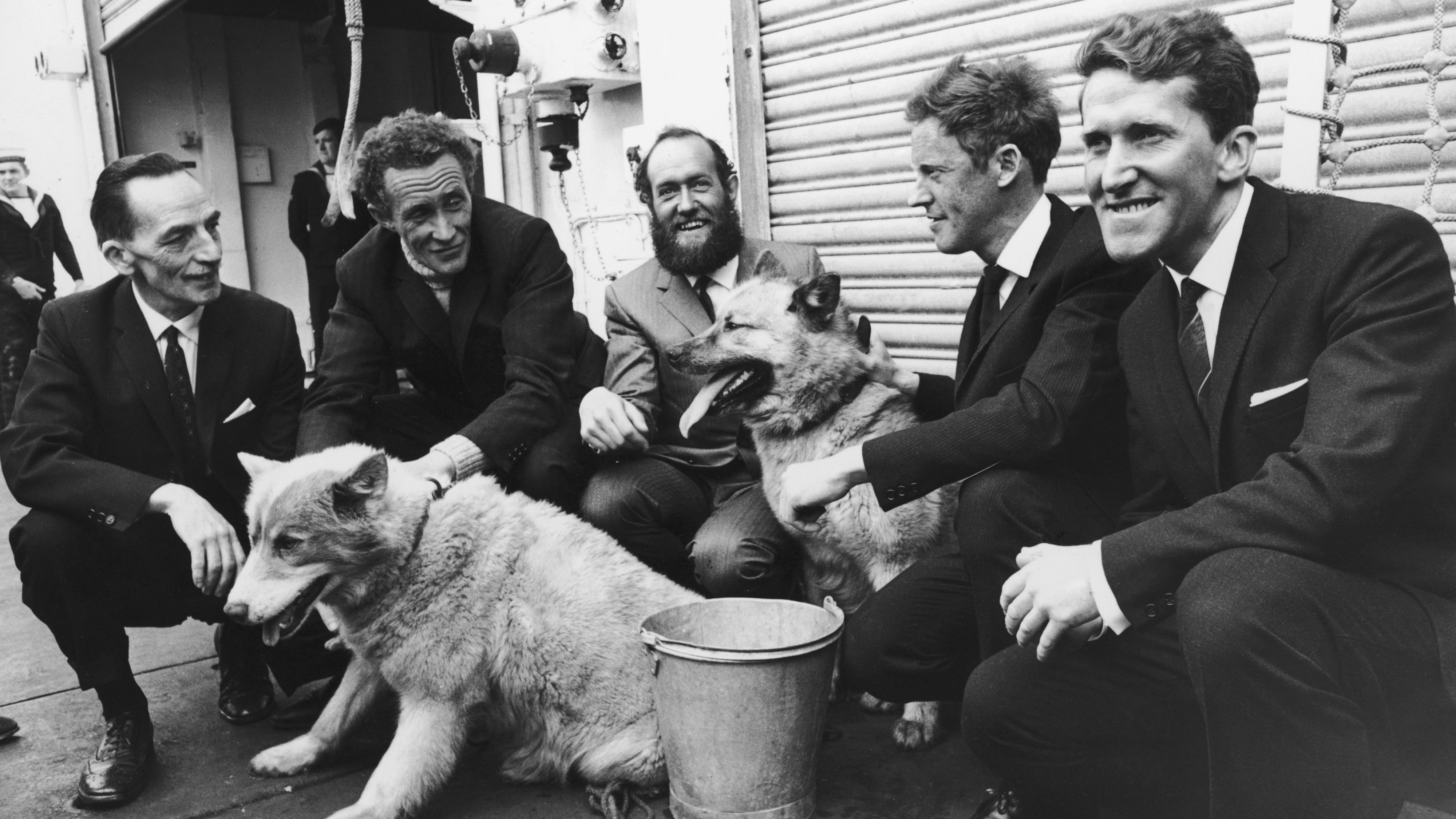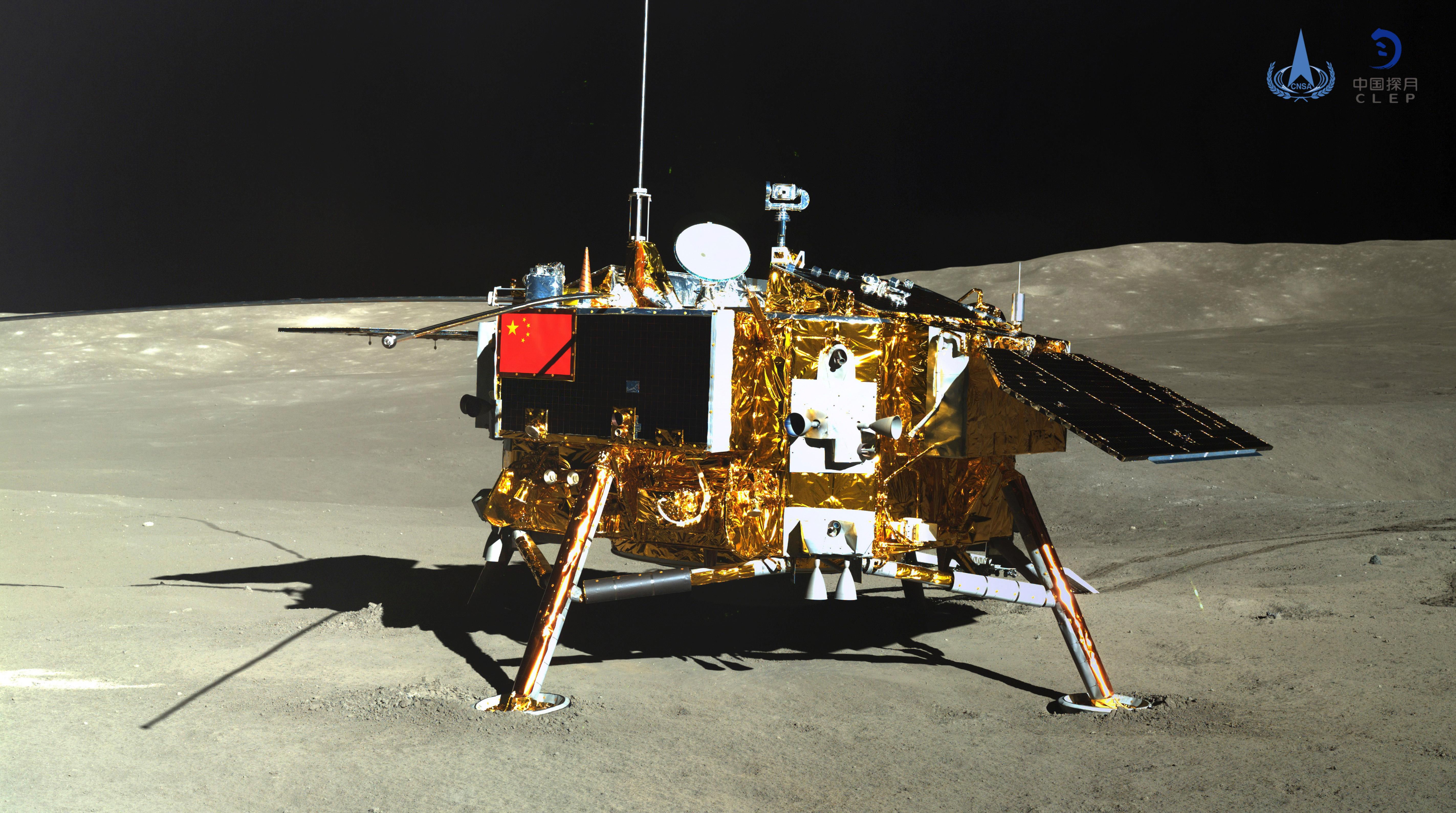Blog – In 1969, humans reached the moon – and the North Pole, too

Few people realize that a mere 101 days before Neil Armstrong and Buzz Aldrin took their fateful steps, mankind officially reached the North Pole.
Today, the world looks back on that fateful date fifty years ago when man landed on the moon.
Yet few people realize that a mere 101 days before Neil Armstrong and Buzz Aldrin took their fateful steps across a “fine and powdery” surface, mankind officially reached the North Pole.
That’s right: it wasn’t until April 6, 1969 – in the springtime of hasty planning at NASA’s Johnson Space Center in Houston – that a human officially made it to the top of the planet. That first person was Sir Wally Herbert, a British polar explorer who reached the pole on foot with the help of fellow explorers, dogs, and air drops. Herbert chose to cross the frozen Arctic across its longest axis that crosses the North Pole, from Utqiagvik (Barrow) to Svalbard. In his 2007 obituary, The Telegraph called his expedition “a 15-month journey of 3,720 miles that has never been repeated.”

Traveling 234,000 miles to the moon, in contrast, took just three days.
Sir Herbert reached the North Pole precisely sixty years after U.S. Navy engineer Robert Peary and his steadfast expedition partner, Matthew Henson, claimed to have achieved 90 degrees north. Peary’s tale of success on April 6, 1909 made newspaper headlines around the world. New York’s satirical publication, Puck, printed a cover featuring the North Pole waving goodbye to the remaining members of the “Undiscovered Club,” which includes the South Pole, the Great American Novel, and universal peace. (Note that in that day, voyaging to the moon was unfathomable enough that it didn’t even merit inclusion among the “undiscovered.”)
Yet nobody has ever since been able to verify the two Americans’ claims, nor whether, if true, it was Peary or Henson, an African American born to sharecroppers, who first stood atop the planet.
That means that 1969 is the year in which two exploration milestones were definitively reached: conquering the North Pole and, three months later, landing on the moon.
Now, as various countries are preparing to send people back to the moon, two sites under consideration for housing a presence that lasts longer than one small step are the lunar poles. If the midnight sun seems like an odd phenomenon during summer across Earth’s northern reaches, imagine a midnight sun that never ceases at the moon’s north and south poles. Due to the fact that the moon is tilted nearly perpendicularly to the sun’s ecliptic, the sun is almost always sitting right on the horizon at these two places year-round.
This unyielding luminescence is responsible for what nineteenth-century French astronomer Camille Flammarion romantically identified as “pics de lumière éternelle,” or “peaks of eternal light.” More than just being French flights of fancy, however, these regions have practical potential, too. Setting up shop next to locations awash in permanent sunshine would provide constant power for solar panels and boast relatively mild temperatures (though, at -60 F, freezing even by Arctic standards), making them preferable to other parts of the moon. In contrast to Earth, the moon’s longitudinal extremes may ironically be its most “temperate” locations.
If humans set up a base on the North Pole, they might decide to call Peary Crater home. As seen in the map below, two other nearby craters named after famous polar explorers include Nansen, after Norway’s legendary Fridtjof Nansen, and Richard Byrd, an American rear officer who claims (not, again, without controversy) to have been the first to reach the North Pole, this time by air.

Meanwhile, the south pole is perhaps home to the “sunniest spot on the moon“: a small hill on a ridge overlooking a crater named after – surprise, surprise – Ernest Shackleton. Also nearby are two uncomfortable crater bedfellows: Amundsen and Scott.
Gazing at maps of the moon shows how its toponymy reifies claims from the annals of Western exploration even if they are murky. The history of European, North American, and Russian efforts to penetrate new frontiers is literally written across its surface.
Yet as Asian countries like China, Japan, and soon India (should the recently scrubbed launch of Chandrayaan-2 to the moon’s south pole succeed) make their mark on the light and dark sides of the moon, those maps and place names may change. In fact, they already have: in 2008, Japan released incredibly feature-rich maps of the moon that included the locations of deposits of various types of minerals. The following year, in 2009, China’s Chang’e 2 probe took photographs that went into the most detailed map of the moon’s surface ever made. Now, this year, a successor to that probe, Chang’e 4, sent back photos from a place Pink Floyd only dreamed of: the dark side of the moon – specifically, a giant impact crater called South Pole-Aitken basin.

The history of exploration of the Earth’s frontiers and beyond to outer space is constantly being rewritten as newcomers make advances, lofty claims are debunked, and old archives (and old wounds) are reopened. Not too long ago, I came across a story that Buzz Aldrin gets frustrated at being called the “second man on the moon” when all three astronauts who were on board Apollo 11 went through the same training – part of which included a stint on Iceland, whose geology bears some of the closest resemblance of any rock formations on Earth to the moon. (Refer back to the featured image at the top of this post to see an iconic photo of American astronauts-in-training in a delightful mix of cowboy boots and Icelandic sweaters, or lopapeysa.
Not content to rest on his lunar laurels, in 2016, Aldrin became the oldest person to reach the Earth’s South Pole (although he fell ill and required evacuating).
Old habits die hard.
This post first appeared on Cryopolitics, an Arctic News and Analysis blog.
Related stories from around the North:
Canada: Arctic Canada: Nunavut’s Mars training ground now available on Google Street View, CBC News
Finland: New Finnish app tests your astronaut skills, Yle News
Norway: NASA and Norway to develop observation station in Arctic, The Independent Barents Obsever
Russia: Russia wants more control over Arctic airspace, The Independent Barents Observer
Sweden: New space incubators opened in Sweden, Radio Sweden
United States: NASA research flight around the world pauses in Anchorage, Alaska, Alaska Dispatch News





Sorry to burst your bubble Mia but no human has ever been on the moon its another scam like climate change many government and media shills still promote the lies but not everyone is fooled by the fakery
There was a second north pole team sponsored by the Daily Telegraph that did not reach its goal. The North Pole Expedition was led by Hugh Simpson and included Roger Tufft and Hugh’s wife Myrth. They intended to man-haul sledges to the pole, but were foiled in late June when the sea ice opened early, leaving them stranded and requiring rescue. They passed several weeks on Devon Island with a team from the Arctic Institute which was studying polar ice ablation on the Devon Island Icecap.